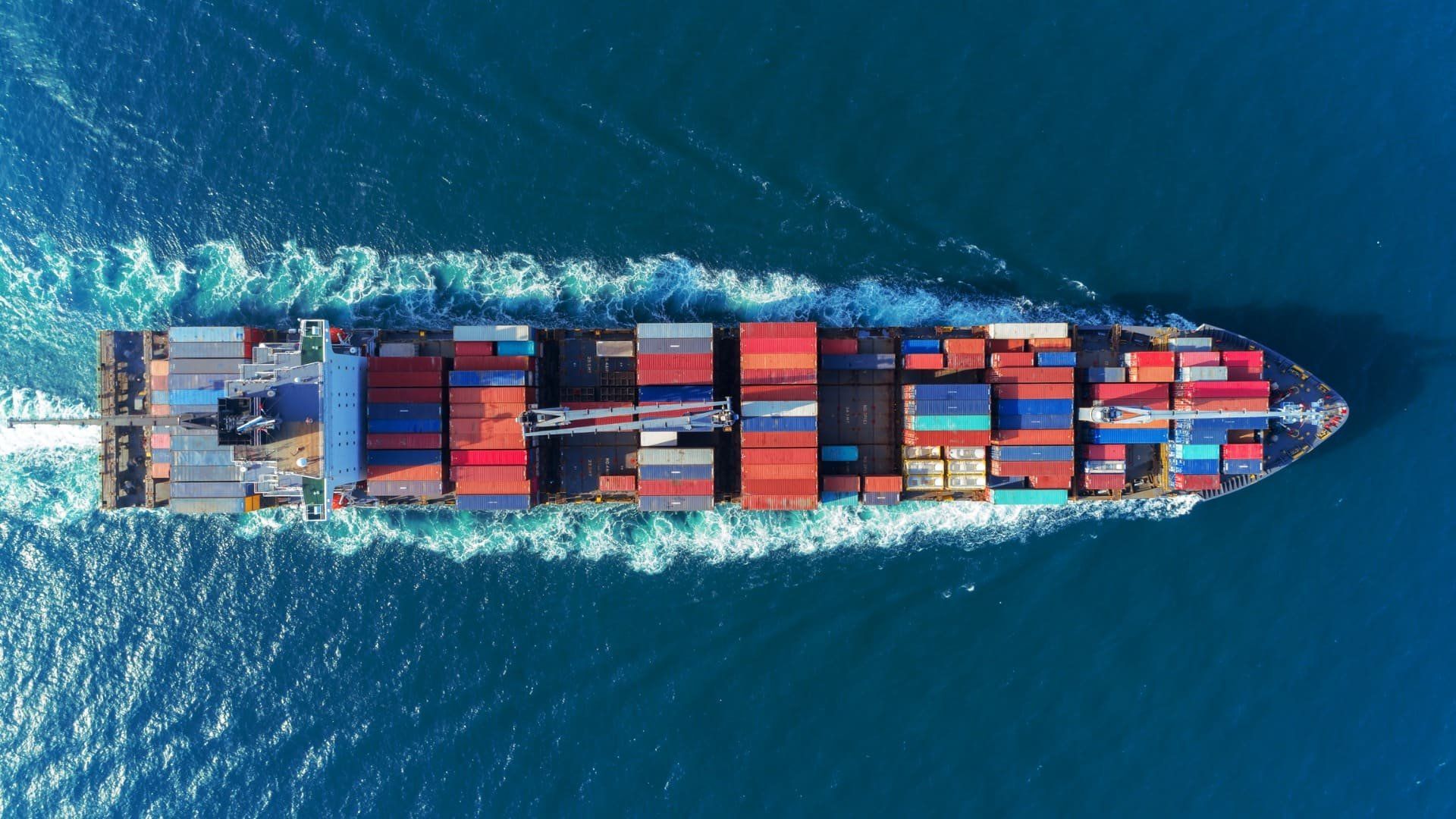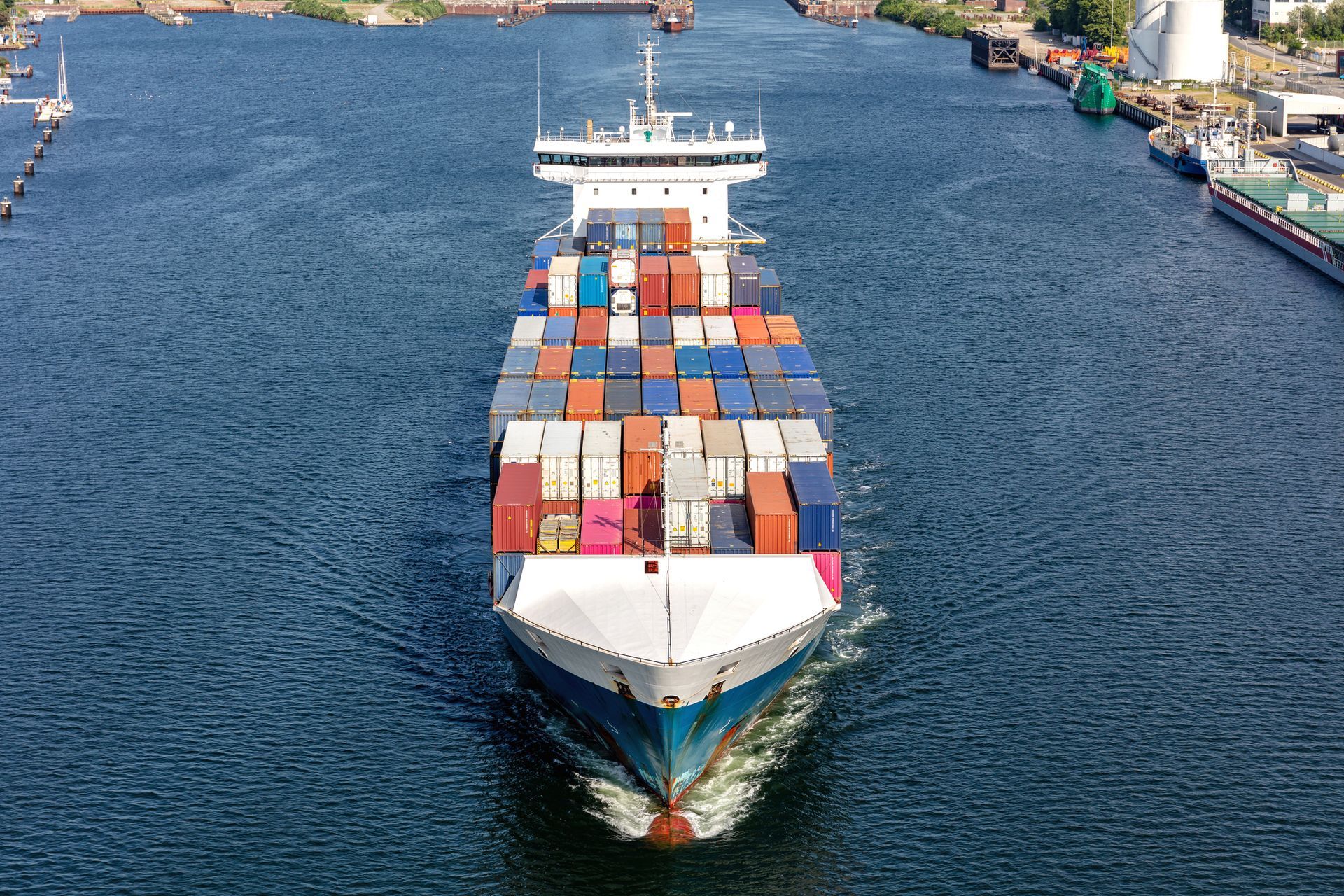
It is estimated that about 90% of Brazilian exports reach their destinations through maritime transport. This highlights the importance of this transportation alternative in the routine of companies. After all, besides allowing the transport of very large cargoes that planes cannot carry, it also tends to offer cheaper freight rates, among other advantages.
In this article, learn more about maritime transport for cargo, the main ports, and some curiosities.
Who is Maritime Transport Suitable For?
Being one of the oldest means of transportation, maritime transport is today one of the main cargo transport methods worldwide. This is because, in addition to offering more economical transportation costs, the variety of cargo types is much broader.
This applies both in terms of the types of materials being transported and the weight or size of the cargo, for example.
However, although maritime transport is very efficient, it is not always the best option. One of the main points to consider before opting for this mode is the delivery time, which tends to be longer.
Compared to air transport, for example, maritime transport has a longer delivery time. Companies must always be aware of urgency.
Thus, maritime transport is suitable for:
- Companies that can plan for a longer time to receive the cargo;
- Companies looking to save on transportation;
- Companies needing to transport larger and heavier cargo;
- Those wishing to reduce transport costs by sharing containers (using the LCL mode), as this makes the entire freight more affordable.
Read also:
- International Logistics: How to Optimize Shipping
- LCL and FCL: What's the Difference and Which to Choose
Advantages of Maritime Transport for Goods
To start, it's important to note that the variety of products that can be transported by maritime means is vast and varied. It's possible to ship anything from pipelines to perishable goods.
Thus, the advantages of maritime transport for cargo include:
- Diverse routes: companies can often send cargo via maritime routes that cannot be reached by air due to lack of routes, thus expanding shipping possibilities;
- Different types of cargo: maritime transport allows for a greater variety of products that are often not accepted by air transport;
- Project cargo: transportation of heavy and large materials that cannot be transported in conventional containers, such as subway pipes or large machines;
- Bulk cargo: maritime transport also carries bagged cargo stored in the ship's hold;
- Refrigerated cargo: it's possible to send perishable goods, such as meat, using reefers in maritime transport;
- Quantity: the ability to send a larger number of items so they arrive together at their destination;
- Safe transport of large machinery.
Types of Freight in Maritime Transport
There are two options: FCL and LCL.
FCL (Full Container Load) is when a company sends a fully loaded container. Essentially, the exporter or importer occupies the container entirely and pays a fixed freight rate.
Although FCL is widely used, there are times when a company doesn't have enough cargo to fill a container. When this happens, opting for Less Container Load (LCL) is more cost-effective.
This type of maritime transport places cargo from various companies in one container. By sharing the container, the company gets a better freight rate and saves money. This is ideal for those needing to transport small volumes.
What Composes the Cost of Maritime Freight
To calculate the cost of maritime freight, whether FCL or LCL, several factors are considered:
- Weight and volume;
- Origin and destination of the cargo;
- Type of merchandise, as each requires special care. Perishables, for example, need refrigeration, while dangerous goods require special precautions to avoid accidents;
- Sales condition (incoterms);
- Direct service or transshipment;
- IMO for dangerous goods;
- Costs associated with cargo handling;
- Stowage factor;
- Ease of arrangement on board;
- Need for special protection;
- Cargo unitization;
- Dredging fees.
Main Types of Cargo Packaging
Packaging:
The first consideration is the packaging. While it can vary greatly, its function is always the same: to maintain the physical integrity of the product and prevent damage during maritime transport and the loading and unloading process. The exporter must deliver the product properly packaged to avoid issues. Generally, maritime transport requires more robust packaging than other modes, as they are exposed to environmental variations.
Unitization:
This process groups fractional volumes into a single load, which remains intact throughout the transport. It helps reduce transportation costs and allows uniform volumes to be packed into cargo units, facilitating loading and unloading while providing more security by eliminating direct handling.
Container Stuffing:
Container stuffing involves fully loading the space with merchandise in an organized and planned manner to maximize space usage, always respecting the load capacity.
General Concepts and Types of Unitization
Unitization aims to group goods with different weights, shapes, and volumes in a single shipment, simplifying, speeding up, and securing the loading and unloading process while optimizing container space.
Common types of unitization for maritime transport include:
- Palletized cargo;
- Containers;
- Pre-slung cargo;
- Special types of unitization.
Curiosities: Types of Ships and Containers
Learn about the main types of ships used in cargo transport and the main containers:
Bulk Carrier:
As the name suggests, this ship is suitable for transporting bulk products. It has large hydraulic hatches covering the holds, and cargo is loaded and unloaded vertically through large hatches. Suitable for transporting:
- Sugar
- Minerals
- Coal,
- Grains
- Fertilizers, and more.
Tanker:
Used for liquid cargo, this ship is equipped to transport any liquid product in bulk, from edible oils to industrial chemicals or methanol. Generally, tankers can carry between 5,000 to 40,000 tons and have specific equipment to maintain the appropriate environment for the cargo, including cooling or heating devices.
Oil Tanker:
A tanker focused solely on transporting oil and its derivatives, capable of carrying 400,000 tons of fuel per voyage. It features interconnected pipes on the deck to evenly distribute the weight and ensure the vessel's balance. These ships are shallower and wider, allowing them to navigate shallower waters, exclusively used for oil and derivatives.
Gas Carrier:
Specially designed for transporting liquefied gases like ethylene, ammonia, LPG, LNG, propylene, and others. They may have different types of tanks, including independent tanks, membrane tanks, integral tanks, and semi-membrane tanks.
Ro-Ro Ship (Roll on-Roll off)
A "rolling cargo" ship, fully enclosed like a vertical parking lot with internal ramps, used to transport train or subway wagons, agricultural machinery, buses, tractors, passenger vehicles, trucks, civil engineering machinery, small airplanes, helicopters, and more.
General Cargo Ship:
Transports various cargoes, project cargo, and containers, including sacks, boxes, paper rolls, and more. It has four or five holds and is versatile.
Container Ship:
Can accommodate anything, transporting food to machines, including bagged goods, liquids, and more, with multiple holds.
National and International Maritime Transport
Here are some of the world's major ports:
- Port of Shanghai, China: Considered the largest port in the world, it moved 43 million TEUs in 2019.
- Port of Singapore, Singapore: Handled 37 million TEUs in 2019 and is expanding to process 65 million TEUs annually.
- Port of Ningbo-Zhoushan, China: Located in Zhejiang province, moved 27,530,000 TEUs in 2019, partly due to a new terminal with a 10 million TEU capacity.
- Port of Shenzhen, China: Moved 25,770,000 TEUs in 2019.
- Port of Guangzhou, China: Handled 23,236,200 TEUs in 2019, interacting with approximately 300 ports across over 80 countries.
- Port of Busan, South Korea: Moved 21,992,001 TEUs in 2018.
- Port of Qingdao, China: Moved 21,010,000 TEUs in 2019, one of the largest in the world.
- Port of Hong Kong, China: Moved 18,361,000 TEUs in 2019, a 6.3% increase from 2018.
- Port of Tianjin, China: Moved 17,264,000 TEUs in 2019, an 8.1% increase from the previous year.
- Port of Rotterdam, Netherlands: Moved 14,810,804 TEUs in 2019.
Brazilian Ports
- Port of Santos: Located in São Paulo, it's Brazil's main port and the 43rd largest in the world, moving over 4.4 million TEUs in 2021.
- Port of Paranaguá: In Paraná, it handles various products, with significant cargo from the chemical, mechanical, agribusiness, wood, transportation, food, and beverage industries.
- Port of Itapoá: Located in Santa Catarina, it moves animal protein and derivatives, wood, ceramics, engines and electrical equipment, paper, auto parts, chemicals, automobiles, plastics, and derivatives.
- Portonave: Located in Navegantes, Santa Catarina, with a total area of 400,000 m².
- Port of Rio Grande: Transports footwear, wood, agribusiness products, transportation materials, and chemical and mechanical industries, located in Rio Grande do Sul.
7 Types of Containers
In addition to various ships, there are several types of containers. Here are some:
- 20” Dry Container: Used for dry cargo, transporting items like wood, bags, pallets, etc.
- 40” Dry Container: Also for dry cargo, larger than the previous one, allowing for greater volume transport.
- 40” High Cube Container: Can be used for dry cargo, with greater height than dry containers, often used for custom projects.
- 20” Bulk Dry Container: Internally suited for loading various grains, coffee seeds, etc.
- 20” and 40” Flat Rack Container: Suitable for very large cargo, like heavy machinery and agricultural equipment.
- Tank Container: Suitable for transporting chemicals, acidic or corrosive cargo.
- Ventilated Container: Can be used for transporting onions, coffee, cocoa, and more.
See how useful and versatile maritime transport is? Interested in shipping cargo?
Check out tips to improve your company's cargo transport management.
Continue a navegar no blog da Allink

Mantenha-se informado sobre o comércio exterior
Assine nossa newsletter e receba atualizações semanais de forma gratuita sobre o mundo da logística.




